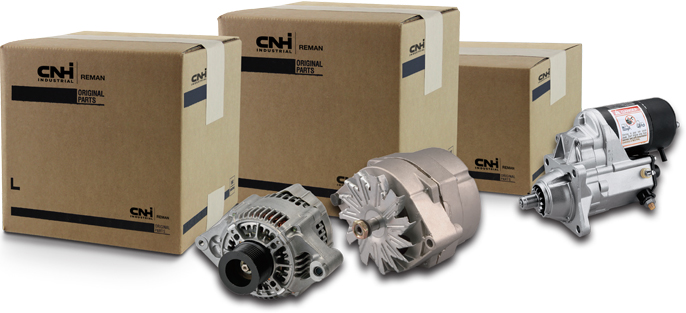Unlock Cost-Effective Solutions: Aftermarket Construction Parts for Every Project Requirement
Wiki Article
Unlocking the Cost-Saving Advantages of Aftermarket Parts for Heavy Equipment
When it concerns hefty machinery maintenance, the selection between initial tools producer (OEM) components and aftermarket components is a decision that holds relevance past the surface. The marketplace for aftermarket components has actually been progressively expanding as a result of various aspects that make them an attractive choice for cost-conscious organizations looking to enhance their upkeep spending plans. By exploring the cost-saving advantages of aftermarket components, one can discover a realm of possible advantages that not only influence the financial profits however likewise the operational efficiency of hefty equipment.Quality Efficiency at Lower Prices
The superior quality performance provided by aftermarket parts for hefty equipment comes with significantly lower costs compared to OEM parts. Aftermarket parts producers have been able to connect the space between high quality and cost, supplying a cost-efficient remedy for organizations looking to maintain and fix their hefty equipment without endangering on efficiency. These parts undergo rigorous testing procedures to guarantee they fulfill market requirements and specs, providing a level of reliability that gets on the same level with OEM parts.By deciding for aftermarket parts, business can access high-quality elements at a portion of the cost of OEM parts, permitting them to allocate their resources extra efficiently and efficiently. The availability of aftermarket components from a broad array of vendors increases competition in the market, driving costs down and offering consumers much more choices to pick from when sourcing components for their heavy machinery.
Varied Array of Options Available
Amidst the aftermarket parts market for heavy machinery, a myriad of varied alternatives stands all set to accommodate the particular requirements and needs of services. This comprehensive series of aftermarket parts uses organizations the adaptability to pick items that align closely with their machinery specifications and budget constraints. From engine components to hydraulic parts, filters, undercarriage components, and much more, companies can choose from different aftermarket choices tailored to different machinery brands and models.Moreover, the aftermarket components market gives organizations with the possibility to discover options that may not be available through initial tools suppliers (OEMs) This variety in choices allows companies to find cost-effective remedies without endangering on high quality or performance - aftermarket construction parts. Whether a company focuses on toughness, price competitiveness, or particular efficiency attributes, the aftermarket components market uses a broad selection to meet these distinctive preferences
Compatibility With Various Equipment Brands

By giving components that are designed to fit flawlessly with machinery from various brands, aftermarket suppliers make it possible for companies to simplify their maintenance procedures and stock monitoring. This flexibility in compatibility additionally implies that firms can consolidate their components sourcing efforts, minimizing the time and resources invested on searching for certain parts for every machine in their fleet.
In addition, the capability to use aftermarket parts throughout various machinery brand names can cause cost financial savings for organizations. Rather than depending entirely on original tools manufacturer (OEM) parts, which can be extra expensive, business can take advantage of aftermarket choices that offer similar top quality at an extra competitive cost factor. This cost-efficient approach to parts procurement adds to total savings for heavy machinery operators while making sure that tools continues to be efficient and operational.
Quick Availability and Easy Access
With the raising need for reliable upkeep options in the heavy machinery sector, punctual accessibility and practical access to aftermarket components have actually ended up being vital for companies seeking to optimize their procedures. Quick accessibility of aftermarket parts ensures that equipment downtime is lessened, allowing companies to return to operations swiftly without long term disruptions. This not only investigate this site enhances efficiency yet likewise avoids revenue loss associated with extended periods of lack of exercise.Easy access to aftermarket components is equally crucial as it simplifies the upkeep process (aftermarket construction parts). When components are readily accessible, upkeep teams can promptly procure the click this site essential elements without extensive preparations or delays. Simplified access to aftermarket components also boosts overall operational performance by decreasing the moment and effort needed to resource and replace elements, inevitably contributing to set you back financial savings and improved equipment uptime
Boosted Worth for Maintenance Budgets

Additionally, the minimized lead times connected with aftermarket parts enable organizations to simplify their upkeep processes. With quicker access to components, equipment downtime is lessened, causing enhanced productivity and lowered earnings loss. This effectiveness in maintenance procedures converts to improved overall tools performance (OEE) and improved fundamental outcomes (aftermarket construction parts). By optimizing upkeep budget plans through the utilization of aftermarket components, companies can achieve an one-upmanship in their sector while sustaining productivity and functional quality.
Verdict
Finally, aftermarket parts for hefty machinery provide an economical option for upkeep requirements. These parts offer high quality efficiency at lower expenses, with a varied variety of choices available for different equipment brands. Their quick schedule and easy gain access to make them a hassle-free option for upkeep budget plans. Overall, using aftermarket components can open substantial cost-saving advantages for services looking for heavy machinery maintenance.When it comes to hefty equipment upkeep, the selection in between initial equipment manufacturer (OEM) parts and aftermarket parts is a decision that holds importance beyond the surface.The remarkable high quality efficiency used by aftermarket components for heavy machinery comes at dramatically reduced prices contrasted to OEM components. These parts go through extensive testing processes to ensure they fulfill sector criteria and requirements, using a degree of dependability that is on par with OEM parts.
By opting for aftermarket components, firms can access high-grade parts at a portion of the expense of OEM parts, allowing them to allot their sources a lot more effectively and effectively. Aftermarket components usually come at a portion of the expense of OEM components, enabling companies to stretch their upkeep budget plans further and allocate sources to other critical locations.
Report this wiki page